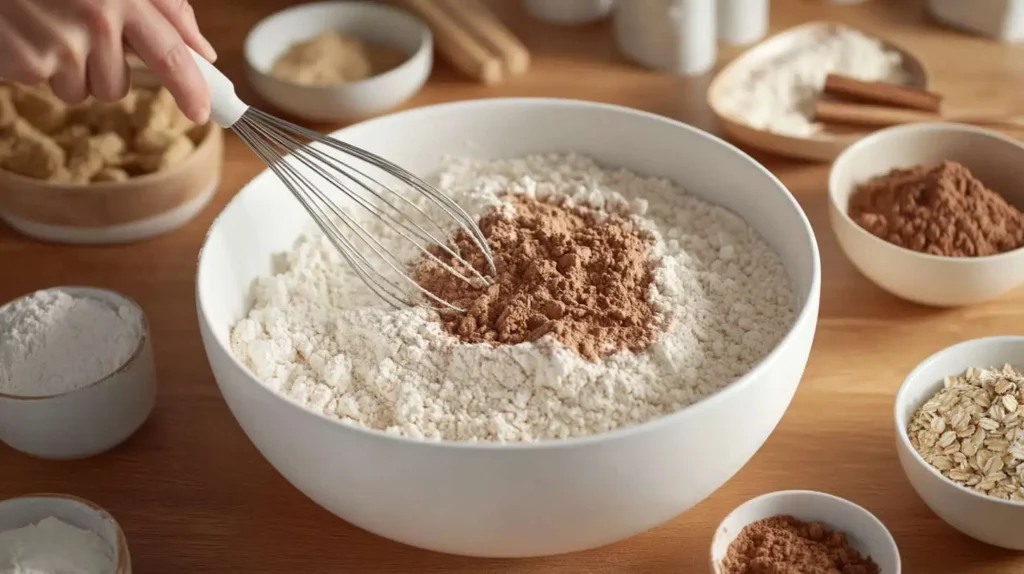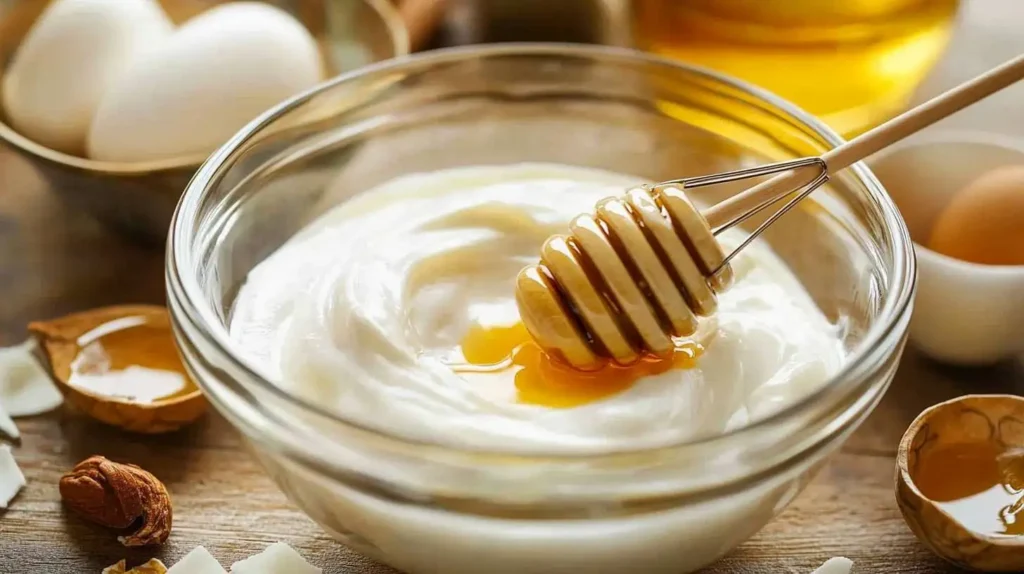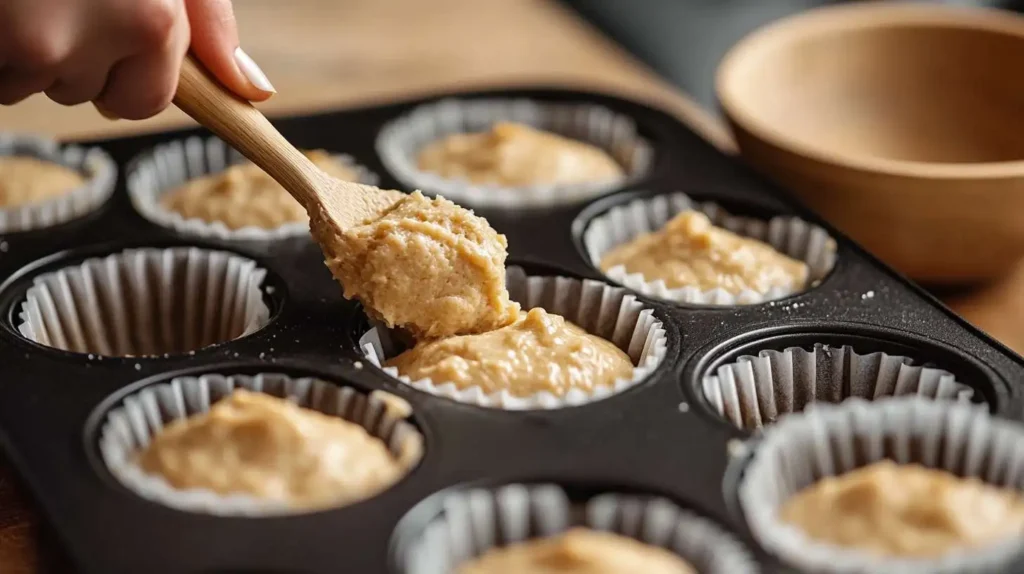Protein muffins are loved by fitness enthusiasts and health-conscious individuals for their delicious taste and nutritional benefits. Packed with high-quality protein, these muffins provide sustained energy, aid in muscle recovery, and satisfy cravings without excess sugar or unhealthy fats. Whether enjoyed as a quick breakfast, post-workout snack, or healthy dessert, they fit perfectly into a balanced diet.
A variety of ingredients can be used to create the perfect protein muffin, from whey and plant-based protein powders to natural sweeteners and nutrient-dense add-ins. With the right recipe, they can be made moist, flavorful, and rich in texture without compromising on health benefits. In this guide, the best protein muffin recipe will be shared, along with tips, variations, and expert baking advice to ensure perfect results every time!
Table of contents
Essential Ingredients for Protein Muffin Recipe
The secret to a perfect protein muffin lies in using high-quality ingredients that enhance both nutrition and flavor. Whether you prefer a classic vanilla version or a rich chocolate variation, the right combination of protein, healthy fats, and natural sweeteners will ensure moist and delicious muffins every time.

1. Protein Powder: The Star Ingredient
Protein powder is the key component in protein muffins, providing the essential macronutrient for muscle repair and energy. Various options can be used based on dietary preferences:
- Whey Protein: A fast-digesting, high-quality protein that works well in most recipes.
- Casein Protein: Slower-digesting and creates a denser texture in muffins.
- Plant-Based Protein: Ideal for vegan or dairy-free diets, though it may absorb more moisture, requiring adjustments to liquid ingredients.
2. Flour Options for Texture and Structure
A balance of protein powder and flour is essential for achieving the right texture. Some of the best choices include:
- Oat Flour: A gluten-free, fiber-rich option that adds a slightly nutty flavor.
- Almond Flour: Provides a moist, tender texture while adding healthy fats.
- Whole Wheat Flour: A nutritious alternative to refined flour, boosting fiber content.
3. Natural Sweeteners for Healthier Muffins
Instead of refined sugar, natural sweeteners can be used to maintain flavor while keeping muffins healthy:
- Honey or Maple Syrup: Adds moisture and natural sweetness.
- Mashed Bananas or Applesauce: Provides natural sugar while keeping muffins soft.
- Stevia or Monk Fruit Sweetener: Great for a lower-carb option.
4. Healthy Fats for Moisture and Flavor
Fats play a crucial role in keeping protein muffins soft and moist. Some excellent choices include:
- Coconut Oil: Adds a subtle sweetness and healthy fats.
- Greek Yogurt: Enhances moisture while increasing protein content.
- Nut Butters (Almond, Peanut, Cashew): Adds richness and creaminess.
5. Binding Agents and Leavening Ingredients
To achieve the perfect rise and consistency, these ingredients are essential:
- Eggs or Flaxseed Meal (for vegan options) help bind the batter together.
- Baking Powder and Baking Soda provide lift and fluffiness.
- Milk or Dairy-Free Alternatives ensure the batter is smooth and well-mixed.
With these essential ingredients, a perfect protein muffin can be created, balancing nutrition and flavor effortlessly.
Step-by-Step Protein Muffin Recipe
Now that the key ingredients have been covered, let’s dive into an easy, foolproof protein muffin recipe that’s both delicious and nutritious.
Classic Vanilla Protein Muffin Recipe
Ingredients:
- 1 cup oat flour (or almond flour for a low-carb option)
- ½ cup vanilla protein powder
- 1 teaspoon baking powder
- ¼ teaspoon baking soda
- ½ teaspoon cinnamon (optional)
- 2 eggs (or flax eggs for vegan)
- ½ cup Greek yogurt (or mashed bananas for dairy-free)
- ¼ cup honey or maple syrup
- 1 teaspoon vanilla extract
- ½ cup unsweetened almond milk
- 2 tablespoons melted coconut oil
Instructions:
- Preheat & Prepare: Set the oven to 350°F (175°C) and line a muffin tin with cupcake liners or lightly grease it.
- Mix Dry Ingredients: In a large bowl, whisk together the oat flour, protein powder, baking powder, baking soda, and cinnamon.

- Combine Wet Ingredients: In a separate bowl, mix the eggs, Greek yogurt, honey, vanilla extract, almond milk, and melted coconut oil until smooth.

- Blend Everything Together: Gradually add the wet ingredients to the dry mixture, stirring until fully combined. Avoid overmixing, as this can make the muffins dense.
- Portion the Batter: Divide the batter evenly into the muffin tin, filling each cup about ¾ full.

- Bake to Perfection: Place in the oven and bake for 15-18 minutes or until a toothpick inserted in the center comes out clean.
- Cool & Enjoy: Allow muffins to cool for at least 10 minutes before removing them from the tin. Enjoy warm or store for later!
This recipe creates soft, fluffy, and nutrient-packed protein muffins that are perfect for a quick breakfast or post-workout snack.
Here’s the next part of the article, covering “Baking Tips for Perfect Protein Muffins,” “Best Toppings & Add-ins for Extra Flavor,” and “Common Mistakes to Avoid When Baking Protein Muffins.”
Baking Tips for Perfect Protein Muffin Recipe
Getting the right texture and taste in protein muffins can be tricky, as protein powder tends to absorb moisture and create a denser texture. Follow these expert tips to ensure your muffins turn out light, fluffy, and delicious every time!
1. Don’t Overmix the Batter
Overmixing can lead to dense and dry muffins because it activates the gluten in the flour and makes the batter too thick. Instead, gently fold the wet and dry ingredients together until just combined. A few lumps in the batter are perfectly fine!
2. Adjust Liquid Ingredients Based on Protein Powder Type
Different protein powders absorb moisture differently. If using plant-based protein, add an extra splash of almond milk or Greek yogurt to keep the batter from becoming too dry. If the batter looks too thick, gradually mix in more liquid until it reaches a smooth consistency.
3. Use Greek Yogurt or Applesauce for Extra Moisture
Since protein powder can make baked goods dry, Greek yogurt, applesauce, or mashed bananas can be added to increase moisture and improve texture. These ingredients also enhance the flavor without adding excess fat.
4. Bake at the Right Temperature
For best results, protein muffins should be baked at 350°F (175°C). Higher temperatures can cause muffins to dry out quickly, while lower temperatures may result in dense or undercooked centers.
5. Let Muffins Cool Before Eating
It may be tempting to eat them right out of the oven, but allowing muffins to cool for at least 10-15 minutes helps set their structure and enhances their texture. Warm muffins are delicious, but patience will prevent crumbling and dryness.
Best Toppings & Add-ins for Extra Flavor
A basic protein muffin recipe is delicious on its own, but adding toppings and mix-ins can make them even better! Here are some of the best ways to enhance flavor, texture, and nutrition.
1. Nutty Crunch for Extra Healthy Fats
Adding nuts gives protein muffins a satisfying crunch while boosting their healthy fat and protein content. Some great choices include:
- Almonds – Add a mild, nutty flavor.
- Walnuts – Rich in omega-3 fatty acids.
- Pecans – Slightly sweet with a buttery texture.
2. Fruits for Natural Sweetness
Fresh or dried fruit adds natural sugars, fiber, and antioxidants. Some popular options include:
- Banana slices – Naturally sweet and creamy.
- Blueberries – Bursting with antioxidants and flavor.
- Raisins or cranberries – A chewy and slightly tart contrast.
3. Chocolate Lovers’ Favorites
For a rich and indulgent twist, try adding chocolate-based toppings:
- Dark chocolate chips – A low-sugar, antioxidant-rich option.
- Cocoa nibs – Crunchy and slightly bitter, perfect for a deep chocolate flavor.
- Melted peanut butter drizzle – Adds creaminess and extra protein.
4. Seeds for an Extra Nutrition Boost
Seeds provide healthy fats, fiber, and protein while giving muffins a nice crunch. Try:
- Chia seeds – A superfood packed with omega-3s.
- Pumpkin seeds – Adds a subtle nutty flavor and extra protein.
- Sunflower seeds – Mild, crunchy, and rich in vitamins.
5. A Light Dusting of Toppings for Presentation
For an elegant finishing touch, try:
- Cinnamon and sugar sprinkle for a classic flavor.
- Coconut flakes for a tropical twist.
- Crushed granola for extra crunch and texture.
Common Mistakes to Avoid When Baking Protein Muffin Recipe
Even the best protein muffin recipe can go wrong if certain baking mistakes are made. Here are the most common pitfalls and how to avoid them for perfect muffins every time.
1. Using Too Much Protein Powder
Protein powder is essential in the recipe, but too much can make muffins dry and chalky. A general rule is to replace only ¼ to ½ of the total flour with protein powder for the best texture.
2. Skipping a Moisture-Boosting Ingredient
Protein powder absorbs a lot of liquid, so it’s crucial to add moisture-rich ingredients like Greek yogurt, mashed banana, applesauce, or nut butter. Skipping these will result in hard and crumbly muffins.
3. Overbaking the Muffins
Overbaking is one of the fastest ways to ruin protein muffins. If left in the oven too long, they become dry and tough. Always check them with a toothpick around the 15-minute mark and remove them as soon as it comes out clean.
4. Not Adjusting for Different Protein Powders
Not all protein powders behave the same way. Whey protein tends to make muffins lighter, while plant-based protein absorbs more liquid. Adjust the amount of milk or yogurt accordingly to keep the muffins soft and moist.
5. Overmixing the Batter
Overmixing causes too much gluten to develop, making muffins tough and chewy instead of soft and fluffy. Mix gently and stop as soon as the ingredients are combined.
6. Ignoring Proper Storage Methods
Leaving protein muffins out in the open will dry them out quickly. Always store them in an airtight container at room temperature for up to 3 days or in the fridge for up to a week. For longer storage, freeze them and reheat when needed.
Following these tips will help create moist, flavorful, and protein-packed muffins every time!
Here’s the final part of the article, including the Conclusion and Frequently Asked Questions (FAQs).
Conclusion
Protein muffins are a delicious, nutritious, and easy-to-make snack that fits into any healthy lifestyle. By using high-quality ingredients like protein powder, natural sweeteners, and healthy fats, you can create muffins that are both satisfying and beneficial for muscle recovery, energy levels, and overall wellness.
Whether you prefer classic vanilla, rich chocolate, or a fruity twist, these muffins can be customized with toppings and add-ins to suit your taste. By avoiding common baking mistakes and following expert tips, you can achieve moist, fluffy, and protein-packed muffins every time. Now that you have the ultimate protein muffin recipe, it’s time to bake and enjoy a guilt-free treat!
Recipe Articles You Might Like
Looking for more ways to power up your breakfast routine? If you enjoy protein muffins, you might also love trying a Chorizo Breakfast Burrito for a high-protein, savory start to your day. For those who love a balance of sweet and nutritious, consider pairing your muffins with a creamy Protein Pudding—a great post-workout treat. And if you’re a fan of baking with alternative flours, you might enjoy experimenting with the unique flavors in our Sourdough Discard Pancakes, which offer a delicious way to reduce food waste while creating wholesome breakfasts.
Frequently Asked Questions (FAQs) About Protein Muffin Recipe
1. Can I just add protein powder to muffin mix?
Yes, but adding protein powder to a regular muffin mix without adjusting other ingredients may result in dry and dense muffins. To maintain moisture, increase the liquid ingredients, such as milk, yogurt, or mashed bananas, and avoid replacing more than ¼ to ½ of the total flour with protein powder.
2. What is the best protein powder for baking muffins?
The best protein powder depends on your preference and dietary needs:
- Whey protein is the most common choice, as it blends well and keeps muffins light.
- Casein protein creates a denser texture and retains moisture well.
- Plant-based proteins (pea, rice, or soy) work for vegan-friendly recipes but may require extra liquid due to higher absorbency.
3. Can you replace flour with protein powder in muffins?
Not entirely. Protein powder lacks the binding properties and structure of flour. Instead of a full replacement, substitute up to ½ of the flour with protein powder. To avoid dryness, add extra moisture-rich ingredients like Greek yogurt, applesauce, or nut butter.
4. Why are protein muffins dry?
Protein muffins can become dry due to too much protein powder, overbaking, or lack of moisture-rich ingredients. To prevent dryness:
- Use Greek yogurt, mashed bananas, or applesauce to add moisture.
- Don’t bake at a high temperature or for too long—350°F (175°C) for 15-18 minutes is ideal.
- Use the right amount of liquid ingredients to balance the dryness caused by protein powder.

